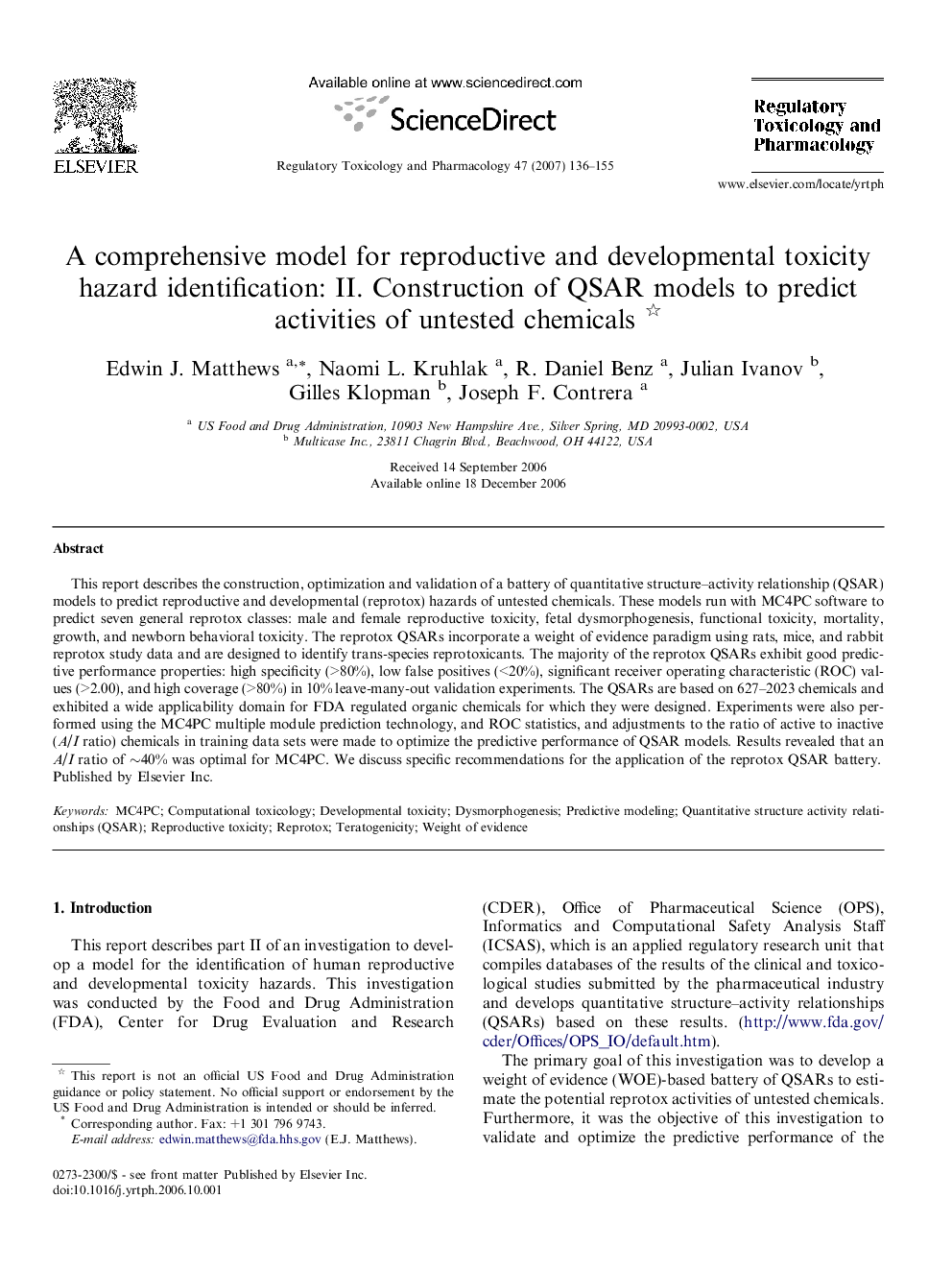| کد مقاله | کد نشریه | سال انتشار | مقاله انگلیسی | نسخه تمام متن |
|---|---|---|---|---|
| 2593100 | 1132071 | 2007 | 20 صفحه PDF | دانلود رایگان |

This report describes the construction, optimization and validation of a battery of quantitative structure–activity relationship (QSAR) models to predict reproductive and developmental (reprotox) hazards of untested chemicals. These models run with MC4PC software to predict seven general reprotox classes: male and female reproductive toxicity, fetal dysmorphogenesis, functional toxicity, mortality, growth, and newborn behavioral toxicity. The reprotox QSARs incorporate a weight of evidence paradigm using rats, mice, and rabbit reprotox study data and are designed to identify trans-species reprotoxicants. The majority of the reprotox QSARs exhibit good predictive performance properties: high specificity (>80%), low false positives (<20%), significant receiver operating characteristic (ROC) values (>2.00), and high coverage (>80%) in 10% leave-many-out validation experiments. The QSARs are based on 627–2023 chemicals and exhibited a wide applicability domain for FDA regulated organic chemicals for which they were designed. Experiments were also performed using the MC4PC multiple module prediction technology, and ROC statistics, and adjustments to the ratio of active to inactive (A/I ratio) chemicals in training data sets were made to optimize the predictive performance of QSAR models. Results revealed that an A/I ratio of ∼40% was optimal for MC4PC. We discuss specific recommendations for the application of the reprotox QSAR battery.
Journal: Regulatory Toxicology and Pharmacology - Volume 47, Issue 2, March 2007, Pages 136–155